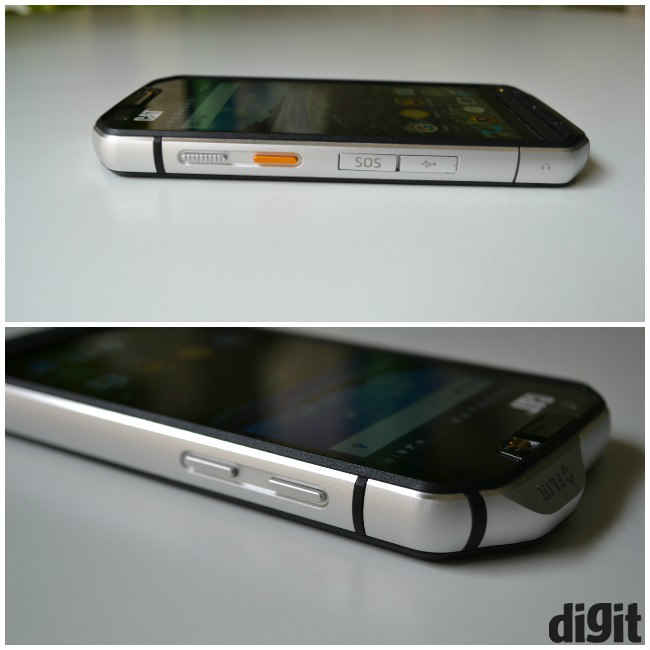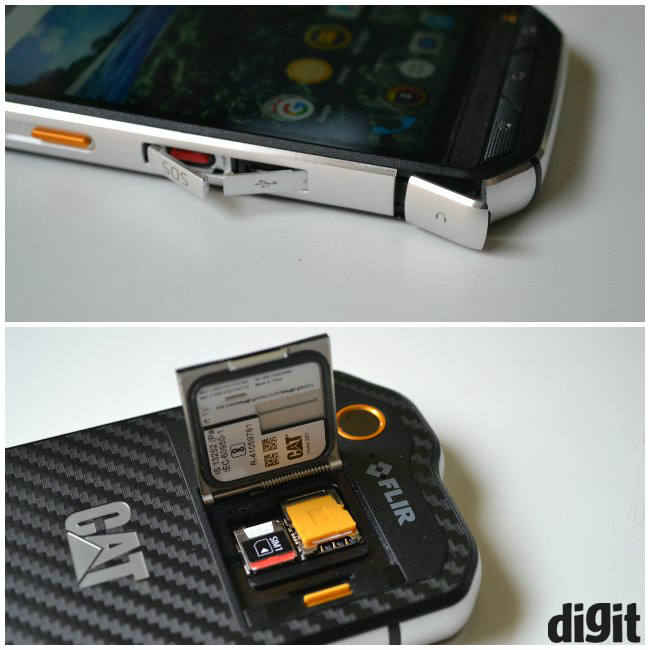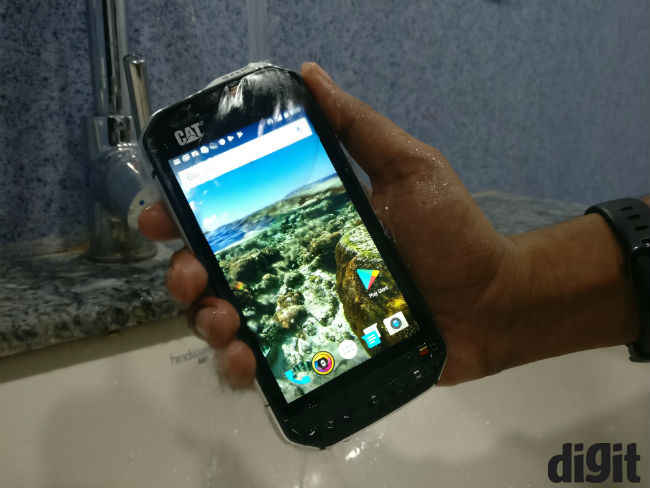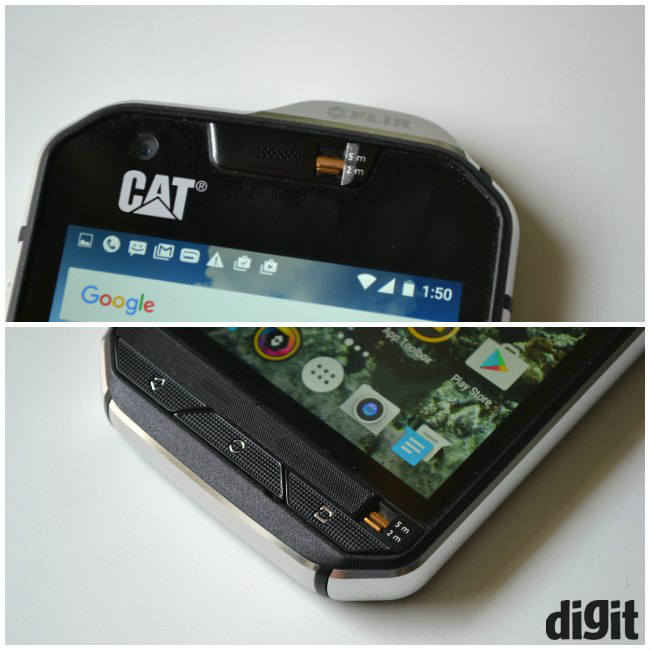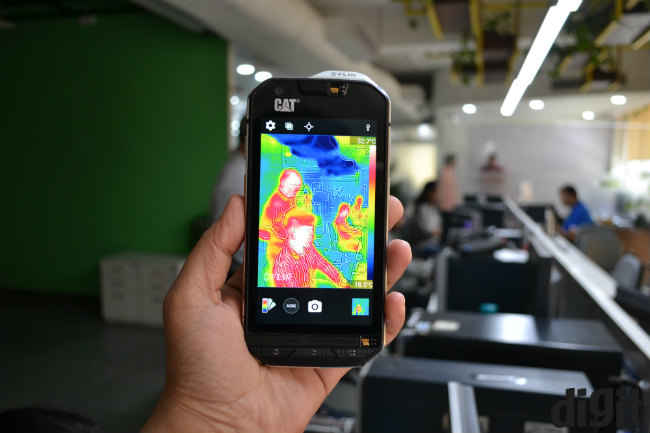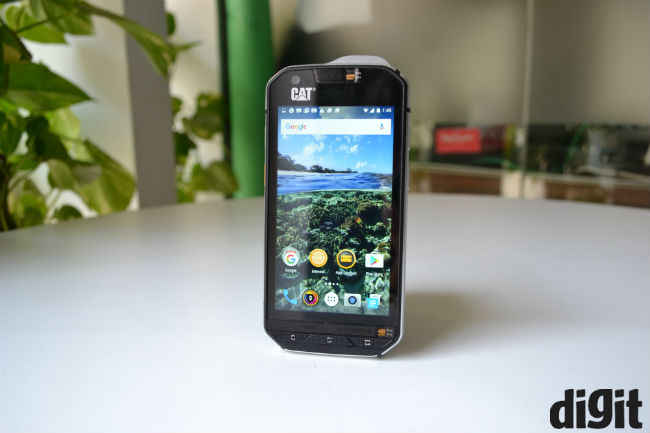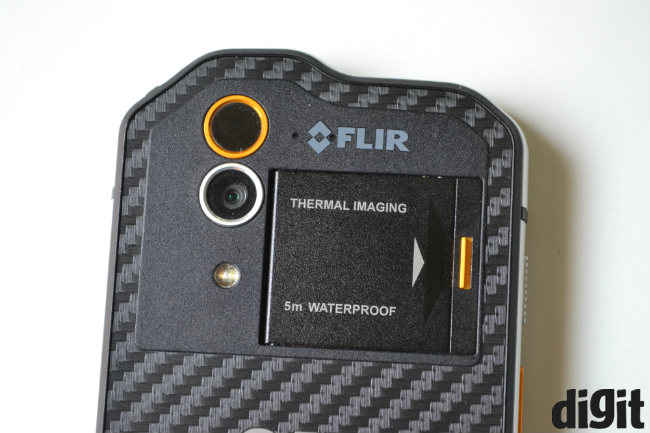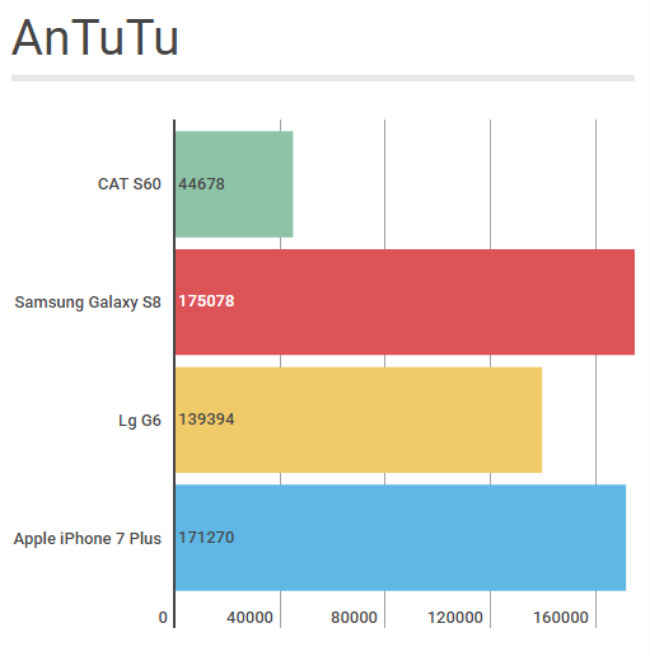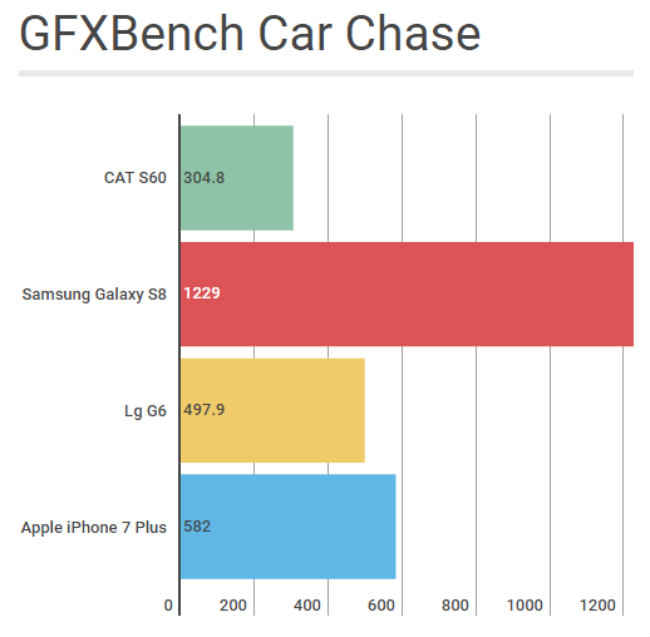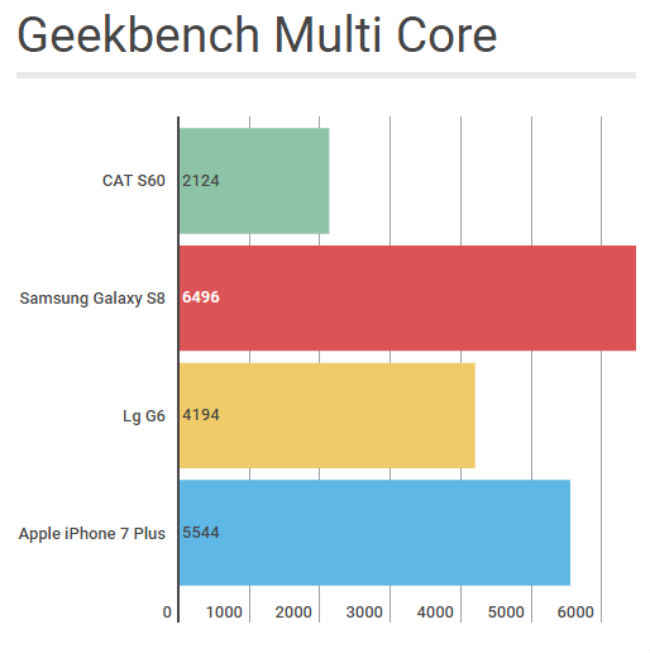Cat S60 Review : If Wolverine was a smartphone
The CAT S60 is not a phone for you and me. It's actually not a phone for most of us. It belongs to a niche market segment. We wish the regular market could have some of this ruggedness, or be at least 30% as rugged as this phone. For a rugged phone, the CAT S60 actually seems to be quite a device. If you are looking for a phone that can keep up with your rough and tumble lifestyle, there are hardly many phones that can compete with the CAT S60. It is currently in a class of its own.
The CAT S60 is a phone that scoffs at the idea of protective covers. It is designed to take on the world and remain standing. It is waterproof, drop proof, and the addition of a thermal imaging camera adds a dash of uniqueness that no other phone can boast. But at Rs. 64,999 this ruggedness (and the thermal camera) doesn't come cheap. The phone is obviously a niche product, meant for people who need such a device. CAT thinks there's a market for such devices in India as well, and it's going to try its luck here. So, for the readers interested in such a device. Here's how it fares.
Build and Design
The CAT S60 looks unlike any other smartphone in the market. In many ways, it's the antithesis of the modern smartphone design. It's big, chunky, asymmetrical, and with a lot of physical buttons and switches. I'm obviously not the user that needs this phone, and I have lost count of the number of questioning looks I got while carrying it. However, the CAT S60 is an attempt at creating flagship design for those that need rugged phones. And it does that quite well.
The device sports a thick metal frame with plastic antenna lines near the corners. The display is sunken into the phone so as to protect it in the event it drops. The top bezel houses the front camera and the ear piece with the Lockdown Switch (which I will talk about in a bit). Below the display is the speaker with the second Lockdown Switch and the three physical Android keys. The top edge of the phone has a bump which houses the FLIR thermal imaging camera. The glass on top of the display panel is thicker than what you'll find on regular smartphones. It's still glass, but the added thickness makes it tougher to break.
On the right, you get the two volume buttons and that's about it. The left edge is quite packed with the power button and programmable key on top, while the SOS key, microUSB port and the headphone jack are located below it, protected by covers so as to prevent water from seeping in.
The phone is obviously hefty, as rugged devices usually are. The front edges tend to gather some dust, since the display is pushed inwards.
While the functions of the volume and power buttons are pretty much self explanatory, the programmable key is a feature that is rarely used on devices. It can be used as a push-to-talk button, letting you use the phone like a walkie-talkie in conjunction with the preloaded Zello app. It can also be used to open apps with either a short tap or a long press. The SOS button below it lets you send a message to designated contacts, letting them know your location. On the CAT S60, the SOS button isn't only because the Government needs it to be placed, but a feature many hickers etc. may find really useful.
The location of the headphone jack (bottom right side of the phone) makes it pretty awkward to use the phone in portrait mode with headphones, as the jack juts out into your palm. Placing the phone in your pocket with such a setup is also pretty awkward. However, in the niche market that this phone will be used in, I think it'll more often be on a backpack's carry pouch etc. So, a headphone jack on the side may not really matter.
It should also be noted that the phone does not come with a fingerprint sensor.
Engaging underwater mode
CAT claims that the S60 is the world's most waterproof phone. While I wasn't able to push the phone to its absolute limits, I did take it swimming and it works absolutely fine under water. Each time you charge the phone or use the headphone jack, there is a short popup reminding you to close the ports properly in order to ensure that the device is waterproof. At Rs. 64,999, I recommend you pay heed to this warning.
While the phone is waterproof up to two meters, flipping the Lockdown Switches to five meters lets you take the device down to such depths. It gives you insight into the kind of users CAT is aiming this smartphone at. The switches shut off the speakers and the earpiece from water damage. The device also lets you take pictures or video underwater. The programmable key has an "underwater mode" as well. When you turn this on, the touchscreen is disabled and the camera is turned on. Pressing the volume button down activates the shutter in this mode, while the programmable key lets you toggle between video and photo modes. Touching the display brings up a slider that lets you disable this mode.
If the phone detects water ingress into the speakers, it prompts you to dry them out faster using the Speaker Dry app. The app starts a cycle of a series of high pitched sounds, which apparently help dry the speakers faster via vibrations. The sounds can get very annoying and since it is advised to turn up the volume when using it, it's best to leave the phone face down on a soft surface while the app does its thing.
FLIR thermal imaging camera
The CAT S60 has a dual-rear camera setup, with the secondary camera being a thermal imaging camera. This is a phone’s signature feature in my opinion. The camera can detect heat signatures and give you a quick visual glimpse at heat levels emitted by objects.
The thermal imaging camera is accessed via a separate app called MyFLIR. The app comes with different modes like photo, video, panorama and time-lapse. There is also the option to choose a different pallet if you want. You can also add multiple heat measuring points in the photo.
There are a number of different uses for the tech. For example, a building contractor might use it to find any leaks along the AC vents in a building. My colleague, Hardik, liked to take shots of test devices to see where the device was generating most heat. I personally loved using it as a night vision camera. Hunting my friends while making clicking noises like the monster in the movie, Predator. Yet another reason why I'm not the right user for this phone. One of the things we all kept doing with the phone, was tracking people's fingerprints on tables.
Display and UI
The CAT S60 comes with a 4.7-inch 720p display with good viewing angles. Colours are warm and contrast is fine. The display is also pretty bright with a luminance rating of 840 Lux. Sunlight visibility is pretty good, which makes sense considering that the device is meant to be used outdoors in rugged conditions.
The phone comes with Android Marshmallow, which is a little disappointing considering that most phones in this price range offer Nougat out-of-the-box. However, you do get a near stock Android experience with a bunch of preloaded apps thrown in. I wouldn't call these bloatware, as some these apps are actually useful considering the CAT S60’s target audience. Besides the aforementioned MyFLIR and Speaker Dry apps, you get the Hike app, which shows you your exact coordinates, compass, air pressure, altitude, weather conditions and more. The Location app lets you feed in a list of contacts. These are the people who will receive an emergency message with your location, should you press the SOS button. The App Toolbox makes it easier to find other activity apps that make best use of the phone's capabilities like fishing apps, running apps, farming apps and more. There is also an app called Mobile Assistant, which uses IBM's Watson AI to deliver results. However, the app wouldn't seem to be working when I was using it.
I haven’t too many complaints about the UI, except for the fact that there is no Clear All button in the recent apps menu. I have a habit of clearing all recent apps and manually swiping them away was a chore.
Camera
Besides the thermal imaging camera, the CAT S60 comes with a standard 13MP rear camera and a 5MP front camera. Images taken by the rear camera are a tad oversaturated and lack details or sharpness. However, the contrast is pretty decent. In low light, the images produced by the phone have plenty of noise. Images taken by the front camera are pretty bleak and skin tones are not distinct.
Performance
Here we find the chink in the CAST S60’s armour. While most phones in this range sport the latest and most powerful specifications. The S60’s are mid-range at best. The device is powered by Qualcomm's Snapdragon 617 platform with 3GB of RAM, a setup that's similar to what was found in last year's Moto G4 Plus. As a result, the phone is woefully underpowered as compared to the current crop of flagship smartphones. Of course, it doesn't content against the aforementioned flagships either. The CAT S60's goal is to provide smooth and fluid performance to rugged users, who usually have to compromise specifications for ruggedness. The Snapdragon 617 does seem slightly ahead of what we've seen in such phones earlier.
In everyday use though, the phone seems fine. Transitions between menus are pretty fluid with only a rare hint of lag. Even games like Asphalt 8 run fine, although you'll have to wait a bit between loading screens. To reiterate, the phone isn’t a performance beast and if you are looking for a phone for playing a lot of video games (which definitely isn't the primary usecase for CAT's users), you are better off looking somewhere else. At this price range, you are spoilt for choice anyway. Further it should be noted that while the CAT S60 should support VoLTE, we tried using two separate Reliance Jio SIM cards and neither seems to be able to make a call. It does support 4G connections, though.
Battery
The CAT S60 sports a 3800mAh battery and during my average work day, which starts at 9am and ends at 11pm, I was left with about 13% battery. That's with about 20 minutes of music streaming, 30 minutes of gaming and a bunch of messaging, calling, social media and playing around with the FLIR camera. In our synthetic benchmark tests, the phone ran for about 8 hours and 40 minutes. That's about the industry average for phones today.
Bottom Line
The CAT S60 is not a phone for you and me. It's actually not a phone for most of us. It belongs to a niche market segment. We wish the regular market could have some of this ruggedness, or be at least 30% as rugged as this phone. For a rugged phone, the CAT S60 actually seems to be quite a device. If you are looking for a phone that can keep up with your rough and tumble lifestyle, there are hardly many phones that can compete with the CAT S60. It is currently in a class of its own and things may remain that way for a long time unless Samsung finally decides to bring its Active lineup of devices to India. Even if it does, it's hard to see Samsung beat CAT in all the rugged aspects. In many ways, the CAT S60 reminds me of Wolverine from the X-Men. It may not be sleek, suave or particularly flashy, it's the best at what it does.

